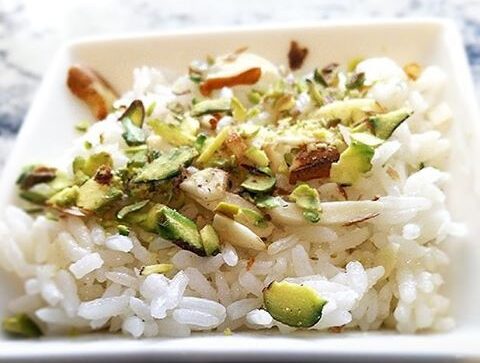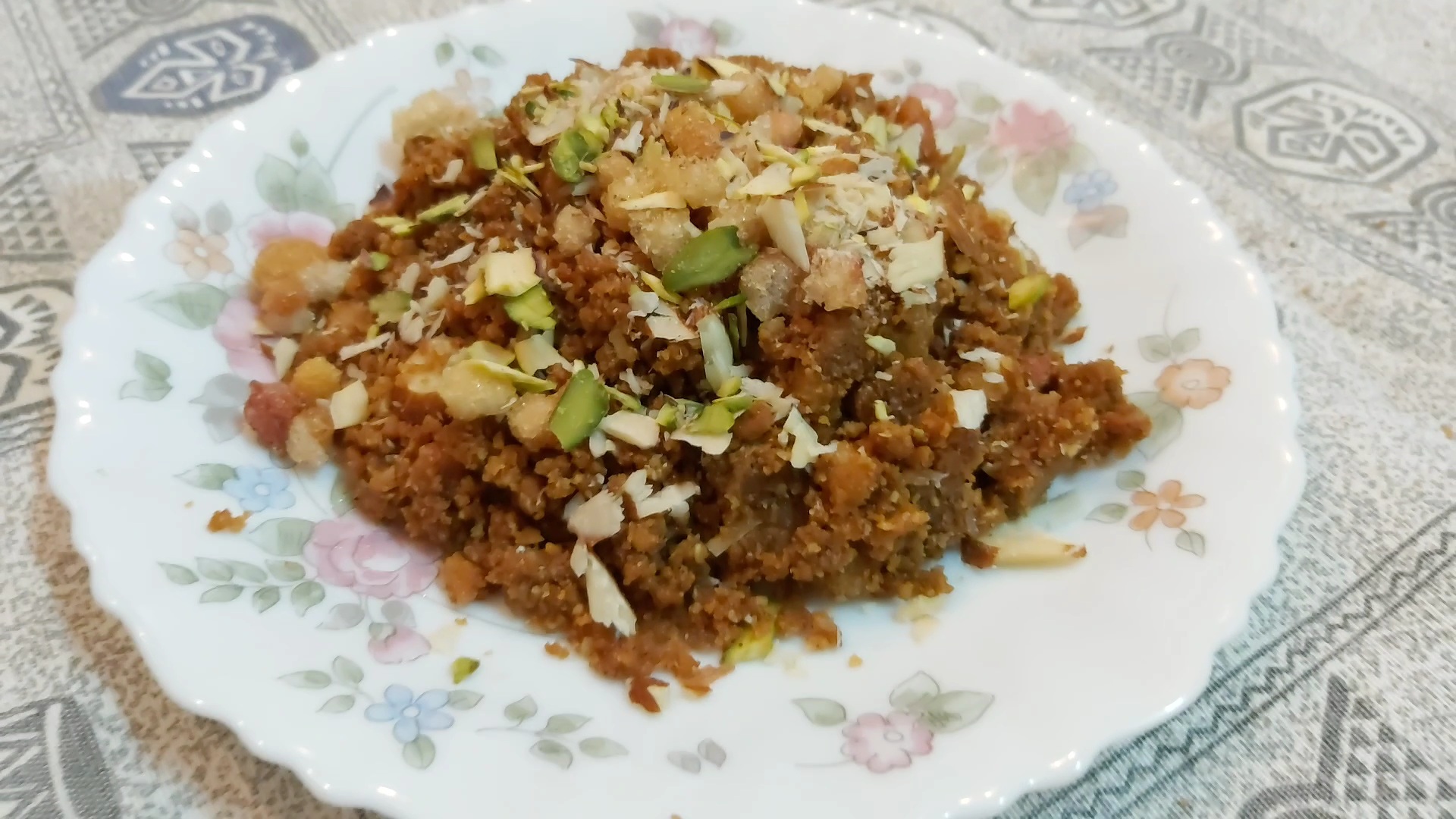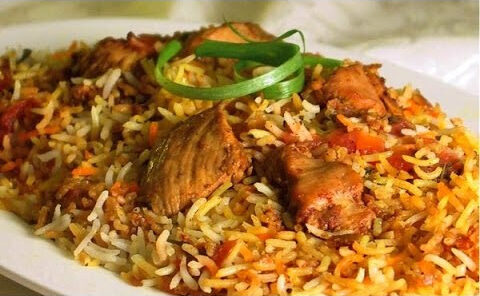
Sodannu/ Sundhenu
Bohra Most Traditional layered rice dish, made with 3 ingredients only, Ghee, Sugar, and Plain boiled rice. Sometimes nuts, saffron and cardamom powder are added, made at every joyous celebration.
The Dawoodi Bohra Muslims trace their heritage back to the Fatimi Imams, the direct descendants of Prophet Mohammed, in Egypt. This vibrant community spans the globe, with a rich history and a unique cultural identity. Guided by their leader, known as the al-dai al-mutlaq (unrestricted missionary), the Dawoodi Bohras have been a cohesive community for over 450 years. The journey began in Yemen and later found its home in India. Today, Dawoodi Bohras thrive not only in India but also in Pakistan, Yemen, East Africa, and the Middle East, and have burgeoning populations in Europe, North America, South East Asia, and Australia.
Table of Contents
Toggle
What sets the Dawoodi Bohras apart is their unwavering commitment to faith, genuine love for their host countries, and a belief in the value of society. From historical interactions with Mughal emperors to navigating the British Raj, and engaging with modern political parties, the Dawoodi Bohras have sought common ground for mutual understanding, contributing positively to the development and prosperity of the places they call home.
The early settlement of Bohras in Gujarat, particularly Surat, has significantly shaped their culinary heritage. Influences from Yemen, Arabic, and Middle Eastern traditions meld with Gujarati flavors, creating a unique gastronomic experience. Mughlai dishes, such as kebabs and tikkas, have become staples in Bohra families, showcasing the diversity within their cuisine.

At the core of Dawoodi Bohra culture is the tradition of communal eating. Bohra families come together in groups of eight or nine people, seated around a thāl, a large metal plate symbolizing unity and sharing. Each course of the meal is served for everyone to share, fostering a sense of family unity and solidarity. This unique custom extends beyond familial boundaries, as Bohras often share their traditional meals with local friends and neighbors, spreading a message of multi-faith unity and peace.
The thal, a large round metal plate, takes center stage in Bohra households. Every meal, from hearty breakfasts to festive dinners, is enjoyed in this communal style. The thaal, elevated with a tarakti stand and laid on a square piece of cloth called a safra, signifies not just a meal but a symbol of unity, equality, and sharing. Traditional Bohra meals, contrary to common norms, commence with dessert, creating a unique dining experience.


Dive into the diverse and vibrant world of Rashida’s Bohra Flavours, where every recipe is a celebration of heritage, unity, and the joy of shared moments. Join us on this culinary adventure, and let the flavors of Bohra and Swahili cuisine weave a tapestry of cultural richness on your plate.
Bohra dining traditions are steeped in symbolism and etiquette. Passing salt before the meal, not placing the thaal until someone is seated, and the no-wastage policy reflect the cultural depth embedded in every aspect of dining. The usage of the right hand, the prohibition of the left hand in the thaal, and the mandatory handwashing before and after meals further highlight the meticulous attention to traditions. Bohra women, adorned in traditional brightly colored and beautifully embroidered ridas, symbolize cultural richness, while men, identifiable by their white topis with golden embroidery, bring a sense of identity to every meal.

Bohra celebrations are synonymous with feasting and culinary delights. Whether it’s a wedding or an ordinary day at home, the Bohra meal structure is a symphony of flavors. Starting with a sweet dish, often ice cream or the traditional sodannu (cooked rice with ghee and sugar), Bohra meals progress through courses of savory appetizers, main courses like biryani and curry rice, and end with another round of dessert. No Bohra celebration is complete without dal chaawal palidu and sodannu, ensuring an abundance of flavors and a sense of togetherness.
The union of two souls in a Bohra wedding is a grand celebration that extends beyond mere matrimony. Culinary extravagance plays a pivotal role in these joyous occasions. The festivities commence with several courses of kharaas (savoury dishes) and mithaas (sweet dishes) served alternately. Sodannu, a layered rice dish with sugar and nuts, takes the lead, setting a sweet tone for the celebration. The culinary journey continues with meat starters, followed by a full-course meal featuring chapattis, or parathas, and an array of rice dishes like biryani and kaari chaawal, creating a gastronomic delight for all in attendance.



Muharram, a sacred month for Bohras, is marked by significant observances and a distinctive culinary tradition. While the first day is a celebration, marked by a thaal full of 28 to 52 dishes symbolizing abundance, the subsequent days, from the 2nd to the 10th of Muharram ul Haram, are dedicated to mourning the martyrdom of Imam Hussein. During this period, celebrity meals are omitted, but the layout remains consistent with one dessert, savoury, and main dish. On the 10th day of Muharram, Khichda, or Haleem, a rich blend of lentils and mutton garnished with green garlic, becomes the focal point, offering both nourishment and solemn reflection.
Bohras celebrate various festivals and special occasions with distinct culinary offerings:
Malido and Kharo Gosht take center stage during the festivities, reflecting the spirit of sacrifice and joy.
Suji no Halwa and Chana are traditional delights enjoyed during these occasions, symbolizing sweetness and prosperity.
Kalamro, a yogurt-based rice pudding, becomes a must-have delicacy during the celebration, honoring the birth of the Prophet.
Bohra occasions are not merely events; they are a symphony of flavors, traditions, and shared moments. Each dish tells a story, capturing the essence of the occasion and creating memories that resonate with the community’s rich heritage.
As you embark on a culinary journey through Rashida’s Bohra Flavours, savor these must-try Bohra delicacies that encapsulate the essence of their unique cuisine:

Sodannu/ Sundhenu
Bohra Most Traditional layered rice dish, made with 3 ingredients only, Ghee, Sugar, and Plain boiled rice. Sometimes nuts, saffron and cardamom powder are added, made at every joyous celebration.

Lappsi / Lacchka
A cracked wheat halwa made with jaggery is usually made on the first night of the Islamic calendar year.

Kalamro / Kalamra
A yoghurt-based rice pudding, adding a creamy and flavourful touch to one of the most iconic Bohra's desserts.

Jardo / Zardo- Sweetened Rice
Sweet saffron rice usually sweetened with sugar and whole spices and had during the last suhoor.

Malido
A sweet made with whole wheat flour, jaggery and ghee, represents a distinctive Bohra Dessert made during Eid ul Adha.

Malai & Mawa Khaja
Crispy flaky layered fried flour pastry filled with fresh cream (malai) or Mawa filling. Sweetened with saffron infused sugar syrup.

Khajja / Khajli and Barfi Mithai
Sweet milk powder mithai placed on top of Plain Khajli - fried flaky pastry without filling, eaten together.

Lagan Cutlass / Lagan nu Seekh
Most loved oven baked layered minced meat dish, topped with eggs, tomatoes and mixed veggies. Symbolising the richness of Bohra Flavours.

Rang in Sauce
Whole goat leg cooked in a flavourful sauce, usually tomato based or cream based, makes it a savoury centerpiece to any festive feast.

Keema Samosa
Crispy savoury delights filled with spiced meat or vegetable fillings, showcasing the Bohra love for exquisite snacks.

Dal Chawal Palidu
Dal Chawal-Rice with Split Pigeon Peas
Palidu-Flour based, lentil soup curry
A vegetarian rice dish with Tuvar Dal (Pigeon Pea Lentil) and a flour based stew, the essence of Bohra Home COoking.

Keema Khichdi & Khurdi
A meat soup cooked in milk, not only delicious but also nutritionally beneficial. Paired with Keema Khichdi- a layered rice and spiced mince meat with fried potatoes and boiled eggs.

Biriyani - Mutton/ Chicken
A fragrant and aromatic rice dish usually with chicken or red meat, fried potato and spices. SYmbolises celebration and bringing together the essence of Bohra Flavours.

Haleem / Khichdo
A richly flavoured combinationof lentils and mutton, garnished with green garlic, ginger slices, mint leaves, fried onions. Served on special occassions.

Vaghareli Khichdi and Kadhi
Vaghareli Khichdi -Rice with lentils
Kadhi - Yoghurt-Flour based Soup
Kadhi is a gravy dish that is prepared with yoghurt and spices, paired with plain or vaghareli (tempered) khichdi cooked with rice mixed with lentils until soft like porridge.
Kadhi and Khichdi go hand in Hand.

Akhni / Pilau
A simple one pot rice dish cooked with meat and meat stock, simple yet flavourful dish.
Bohra cuisine isn’t just about food; it’s a journey of flavors, traditions, and shared moments. Each dish holds a story, and Rashida’s Bohra Flavours is your gateway to uncovering these tales.
As we delve into the heart of Bohra heritage, we find a fascinating fusion of influences from East Africa, Arabia, and the Middle East. This cultural amalgamation is mirrored in the culinary landscape, creating a unique and exciting experience. Notably, Bohras in East Africa embrace grilled beef dishes of Swahili influence, showcasing the diverse culinary preferences within the community.
Rashida’s Bohra Flavours isn’t just a recipe blog; it’s a cultural exploration. What sets us apart:
Cultural Richness: Our recipes are infused with the cultural richness of Dawoodi Bohra traditions.
Passion for Sharing: Each post is crafted with a passion for sharing not just recipes but stories and traditions.
Unique Fusion: Experience the unique fusion of Bohra and Swahili flavors, creating a culinary marriage like no other.
Inclusive Appeal: Rashida’s Bohra Flavours caters not only to Bohras or Swahili enthusiasts but to a wide range of people seeking a diverse culinary experience. Our recipes offer a unique palate that goes beyond the traditional Asian Indian flavors, making it an ideal choice for those looking to indulge in a distinctive and delightful cuisine.
Explore the world of Rashida’s Bohra Flavours, where cultural diversity meets culinary excellence, welcoming all who appreciate the joy of exploring new tastes and traditions
© 2023 Created by Munira Amijee
Ready to dive into a unique combination of Swahili, Bohra and Gujrati Flavours ?
Whether you are a food enthusiast or a home cook or want to connect with the East African Food culture, you are at the right place !
Join Our Culinary Journey & Discover Mouthwatering Recipes, Cooking Tips, and Cultural Insights !
🔔 Don’t Miss Out on Delicious Content – Hit Subscribe Now! 🔔